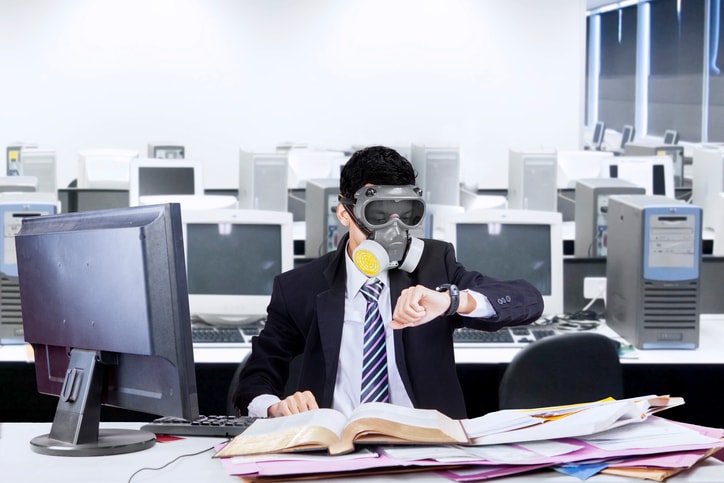AIR QUALITY AND WORKPLACE PRODUCTIVITY
Indoor air quality can affect more than the health of the individuals in your workplace: it can even affect employees’ productivity. A recent study by the National Bureau of Economic Research compared productivity at various factories in China and found that those who worked at facilities with better air quality were five to six percent more productive than those with worse indoor air quality. While your average office building in the U.S. will not have as much air pollution as a factory in China, these findings are still relevant in highlighting the impact of air quality on productivity. Small-scale changes that you can make in order to improve air quality and productivity in the workplace include:
1. Good airflow within the office
2. Limiting exposure to outdoor air if your office is near a highway or construction zone
3. Arranging furniture with attention to good airflow and away from ventilation systems
4. Increased natural light and decreased heat and glare
1. Good airflow within the office
2. Limiting exposure to outdoor air if your office is near a highway or construction zone
3. Arranging furniture with attention to good airflow and away from ventilation systems
4. Increased natural light and decreased heat and glare
How to improve air quality in workplace
You have many options when it comes to reducing the negative impact of poor air quality and keeping your employees happy and healthy. Some steps to take include:
Control Pollutants & Contaminants
1. Prevent mold by cleaning up spills and messes as soon as they occur, addressing leaks as soon as possible, and increasing ventilation in your workspace to ensure maximum airflow and minimal humidity and moisture.
2. Avoid using strong or toxic chemicals in cleaning.
3. Prohibit smoking in and near your buildings.
4. Analyze parking areas and proximity to roads to reduce pollutants from carbon monoxide and other byproducts.
5. Clean frequently, especially if you have an animal-friendly workspace.
Increase Ventilation
Increasing ventilation within your workspace is another way to avoid the buildup of pollutants. Having increased air circulation in your workplace can omit pollutants and reduce your risk of mold growth, which will also reduce the amount of allergens in your office. Some ways to increase airflow within your office space include:
1. Opening windows and doors when weather permits (but be mindful of pollen and other allergens that may find their way in when doors are open!)
2. Improving the air filters within your workspace and ensuring that they are working properly and not blocked
3. Adding plants to your office
1. Opening windows and doors when weather permits (but be mindful of pollen and other allergens that may find their way in when doors are open!)
2. Improving the air filters within your workspace and ensuring that they are working properly and not blocked
3. Adding plants to your office
What to do if you are concerned about your office’s Indoor air quality
If you think your office space is suffering from poor air quality, schedule a test as soon as possible to assess the situation. Testing for mold spores, general environmental conditions, and toxic gases is a proactive measure to take to keep your team happy and healthy in the long run.



